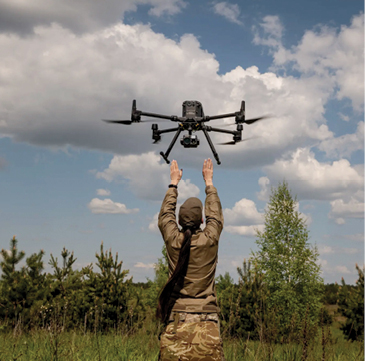
Articles
Defence Acquisition Process
Sub Title : Recommendations for making the DAP more agile and adaptive
Issues Details : Vol 19 Issue 3 Jul – Aug 2025
Author : Ashwani Sharma, Editor-in-Chief
Page No. : 44
Category : Military Affairs
: July 29, 2025

Dynamic Process in tune with changing Warfare QR vs FR
As the DAP is under revision, it is timely to obtain inputs about reforms in the procurement process. Thus, two articles are included in this issue. Both the authors agree that the new process must be more agile and adaptive, and make some pertinent suggestions.
Despite a number of revisions since its first avatar (DPP 2002), India’s defence procurement process has long drawn comments for being slow, rigid and ill-suited to meet the dynamic demands of modern warfare. While the country aspires to build a self-reliant and technologically advanced military and the current procedure (DAP 2020) in vogue reflects that urgency, the acquisition system remains entangled in bureaucracy, outdated procedures, and an overemphasis on compliance over capability. To ensure that the Indian Armed Forces are equipped to respond to both conventional and emerging threats, it is imperative to reimagine the defence procurement process as agile, responsive, and innovation-friendly.
At the heart of the issue lies a procurement structure that has traditionally been risk-averse and excessively procedural. The Defence Procurement Procedure (DPP), now rebranded as the Defence Acquisition Procedure (DAP), has undergone multiple iterations since its inception, each intended to streamline and improve the process. However, despite these changes, the time taken to translate a requirement from conception to induction remains unacceptably long. Complex trials and evaluations, multiple layers of approval, and rigid adherence to formal guidelines often delay acquisitions, forcing the defence services to either compromise operational readiness or rely on emergency purchases. MRCA, VSHORADS, FICV project are examples where the process failed after a number of years, millions of dollars and unending efforts….the list is long.
This slow pace is in direct contrast to the evolving character of warfare. In today’s era of hybrid warfare, cyber threats, unmanned systems, and rapid technological advances, procurement must be quick, flexible, and open to innovation. Countries like the United States and Israel have embraced models that favour agility with dedicated units like the Defence Innovation Unit (DIU) or mechanisms that allow for rapid fielding of new technologies. India, too, must consider similar structural innovations to enable timely acquisitions without sacrificing transparency or accountability.
One of the tenets of reform should be a shift in focus from procedural correctness to operational effectiveness. Rather than treating procurement as an administrative process, it should be seen as a strategic enabler. This implies more autonomy to service headquarters, faster decision-making through empowered committees, and enhanced accountability based on performance rather than mere adherence to process. There is also a need to trust the services’ judgement more allowing them to define what they need based on operational experience rather than being forced to retrofit needs into pre-approved templates.
Feature Requirement Vs Qualitative Requirement. In this context, the traditional approach of defining a detailed Qualitative Requirement (QR) for each acquisition deserves reconsideration. QRs, while useful in ensuring clarity and uniformity, often become straitjackets. They are typically formulated with such specificity that they inadvertently exclude newer, potentially superior technologies that do not tick every prescribed box. Moreover, by the time a QR is finalised and a product procured, the technology landscape may already have shifted, rendering the acquisition partially obsolete.
Instead, the defence establishment should explore the concept of feature requirements. Unlike rigid QRs, feature-based specifications emphasise desired outcomes or capabilities without prescribing exact technical solutions. This approach encourages innovation, broadens the field of contenders, and allows vendors to propose creative solutions that may exceed the original expectations. Feature requirements are particularly valuable when dealing with emerging technologies like artificial intelligence, quantum computing, or drone swarms, where the pace of advancement outstrips conventional procurement cycles.
Adopting a feature-based model also opens the door to greater participation by Indian start-ups and MSMEs, who may have viable solutions but struggle to navigate the QR-based system. This aligns well with the Atmanirbhar Bharat initiative, which seeks to bolster indigenous defence production and reduce dependency on foreign vendors. By creating room for innovation and iterative development, the Ministry of Defence can foster a more vibrant domestic defence ecosystem.
Field Trials and Evaluation. Another area ripe for reform is the structure of trials and evaluations. Currently, this process is time-consuming and risk-averse, often biased towards legacy systems or known entities. A more layered approach that includes technology demonstrators, pilot projects, and modular induction can shorten timelines while allowing room for adaptation. For instance, a limited-scale induction followed by operational feedback can help refine future requirements and scale up procurement more confidently.
Digital Tools. Finally, greater use of digital tools and data analytics can bring much-needed transparency and efficiency to the procurement process. Digital dashboards, AI-based risk assessments, and automated project tracking can reduce human error and improve accountability, while also providing policymakers with real-time insights into procurement progress.
To conclude – India’s defence procurement system must evolve to reflect the speed and complexity of modern warfare. An adaptive, agile approach that prioritises capability over compliance, embraces feature-based specifications, and nurtures innovation will not only enhance military readiness but also contribute to national strategic autonomy. Reform, in this domain, is not just desirable, it is imperative.


